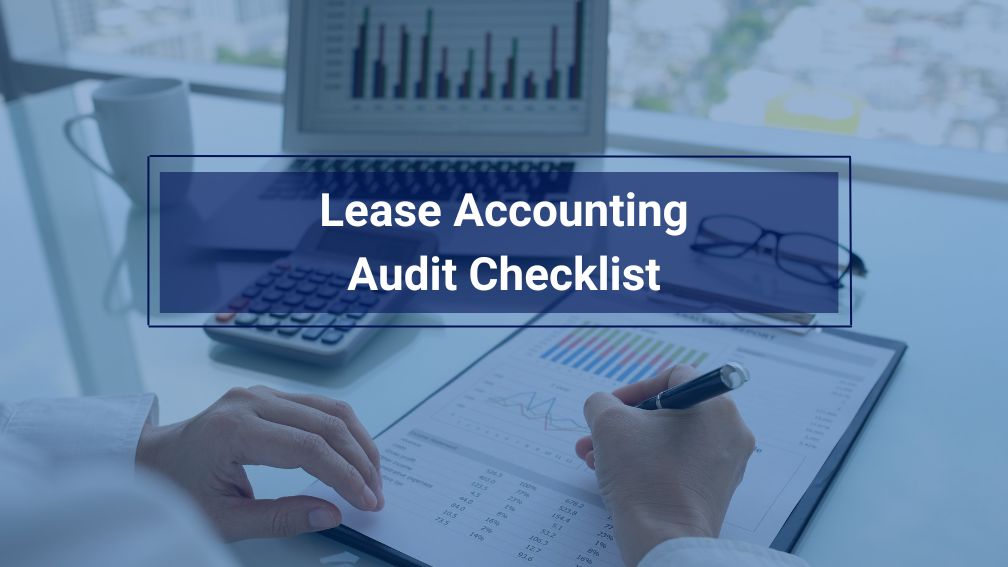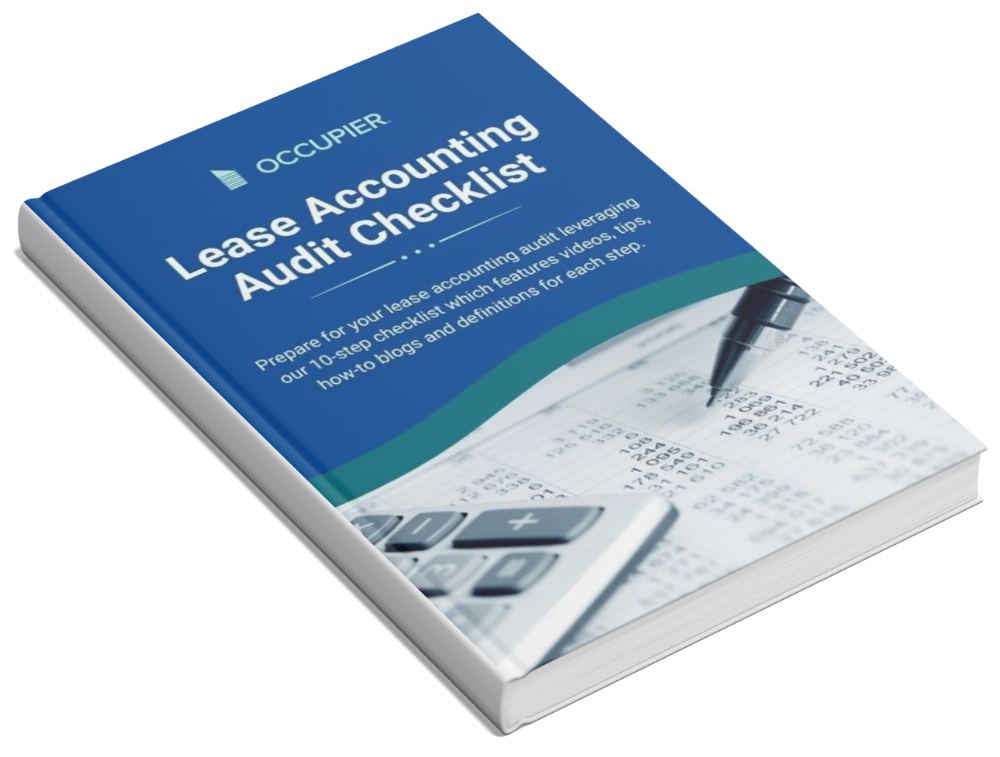The Essential Lease Accounting Audit Checklist
Last Updated on May 23, 2025 by
With the new lease accounting standards in effect since 2019, (for public companies) lease accounting audits have become a recurring task for accounting teams. The Financial Accounting Standards Board (FASB) has outlined its expectations for accurate records and accounting policies to be in place for public, private, and non-profit organizations with a lease portfolio. Now, companies have to recognize most leases on the balance sheet as right-of-use assets and lease liabilities. The financial impact of this change requires a significant time lift for internal teams.
To help commercial tenants prepare for their lease accounting audit efficiently under the new standards, we’ve created a comprehensive Lease Accounting Audit Checklist. This checklist contains the key audit procedures, internal controls, and documentation needed to audit your lease transactions, journal entries, and financial data at your year-end.
In this blog post, we’ll walk through the major sections of the checklist, so you understand the essential steps for auditing leases. Or skip to the good stuff, and download the PDF checklist, so your team can start your lease accounting audit prep!
What is a Lease Accounting Audit?
Perform a Departmental Lease Survey
A key risk in auditing leases is ensuring the completeness of the lease population. The first step to gaining lease completeness is performing a detailed lease survey across the organization’s departments. The checklist contains steps to corroborate leases through inquiry, review of lease agreements, and analytical procedures.
Procedures to find leases and test lease completeness include:
- Inquire with management about new lease agreements
- Review lease management system for complete lease listing
- Tie fixed assets register to lease agreements
- Scan A/P for vendor lease payments
- Review minutes and agreements for new leases
- Analyze rent expenses for unusual fluctuations
Review Lease Policies and Procedures
Next focuses on reviewing the company’s overall lease policies and procedures. This involves understanding the process they follow to account for leases, from lease inception to ongoing measurement and disclosure.
Specific procedures include:
- Inquire about lease policies and procedures with management
- Review documentation on the company’s lease review process
- Understand key controls around lease data inputs and accounting entries
- Assess the roles and responsibilities of lease accounting
Test Right-of-Use Asset and Lease Liability Balances
The most significant effort will involve substantively testing the right-of-use asset and lease liability balances. This includes auditing the amortization schedule of right-of-use assets and interest on lease liabilities.
Audit procedures include:
- Agree on lease classification (operating vs finance lease)
- Recalculate right-of-use assets and lease liabilities
- Test key estimates/judgments like discount rates and lease terms
- Review amortization/interest calculations for accuracy
- Assess impairment testing methodology and assumptions
- Validate lease disclosures match tested balances
Prepare Common Audit Requests:
To gain sufficient audit evidence on leases, auditors need to make important requests to management. Some common audit requests should include:
Roll Forward Report
Obtain a roll-forward report of the right-of-use assets and lease liabilities from the beginning to the end of the period. This report should show beginning balances, new leases, disposals, amortization/interest, payments, modifications, and ending balances.
Financial Statement Lease Disclosures
Request a copy of all draft financial statement disclosures related to leases. This includes disclosures on lease policies, lease details, lease commitments, and any other quantitative and qualitative disclosures.
Significant Assumptions Report
Ask management to prepare a detailed report listing all significant assumptions utilized to account for leases. This includes the incremental borrowing rate/discount rate applied to leases along with the factors used to derive the rate. It should also include the lease term used for each lease along with how it was determined.
Reviewing these key reports allows auditors to analyze lease activity, test reported balances, and substantively test assumptions/judgments made by management. Be sure to follow up on any incomplete or inconsistent items noted in these reports. Maintaining these requests each audit improves the quality and consistency of lease evidence obtained.
Monitor Ongoing Compliance
Since lease accounting contains estimates, auditors need to monitor changes and compliance on an ongoing basis. The checklist contains procedures for understanding the company’s controls around monitoring lease data and assumptions.
Ongoing compliance steps include:
- Understand the process for updating lease assumptions
- Review controls around lease modification accounting
- Test significant changes in right-of-use assets/lease liability balances
- Assess controls over update of lease disclosures
- Ensuring your software is SOC1 compliance
Use a Lease Accounting Audit Checklist
Using a solid lease accounting audit checklist is essential for effectively auditing leases under the new standards. Our checklist summarizes the key procedures and documentation auditors need. Download our free checklist to improve your lease accounting audits.
Audit Results:
The new lease accounting standards significantly impact the audit of leases. Our comprehensive audit checklist summarizes the key procedures and specific needs in order to gain assurance over lease transactions and balances. Your financial reporting processes are key to clearly outlining your organization’s financial records and building out an audit trail for external reviewers to assess.
Be sure to leverage a detailed checklist for preparing for efficient, high-quality lease audits. Reach out if you need any help implementing our lease accounting audit checklist. Occupier has in-house lease accounting experts to support your lease accounting audit compliance journey with technical support as well as lease accounting software to elevate your ASC 842 implementation processes.

